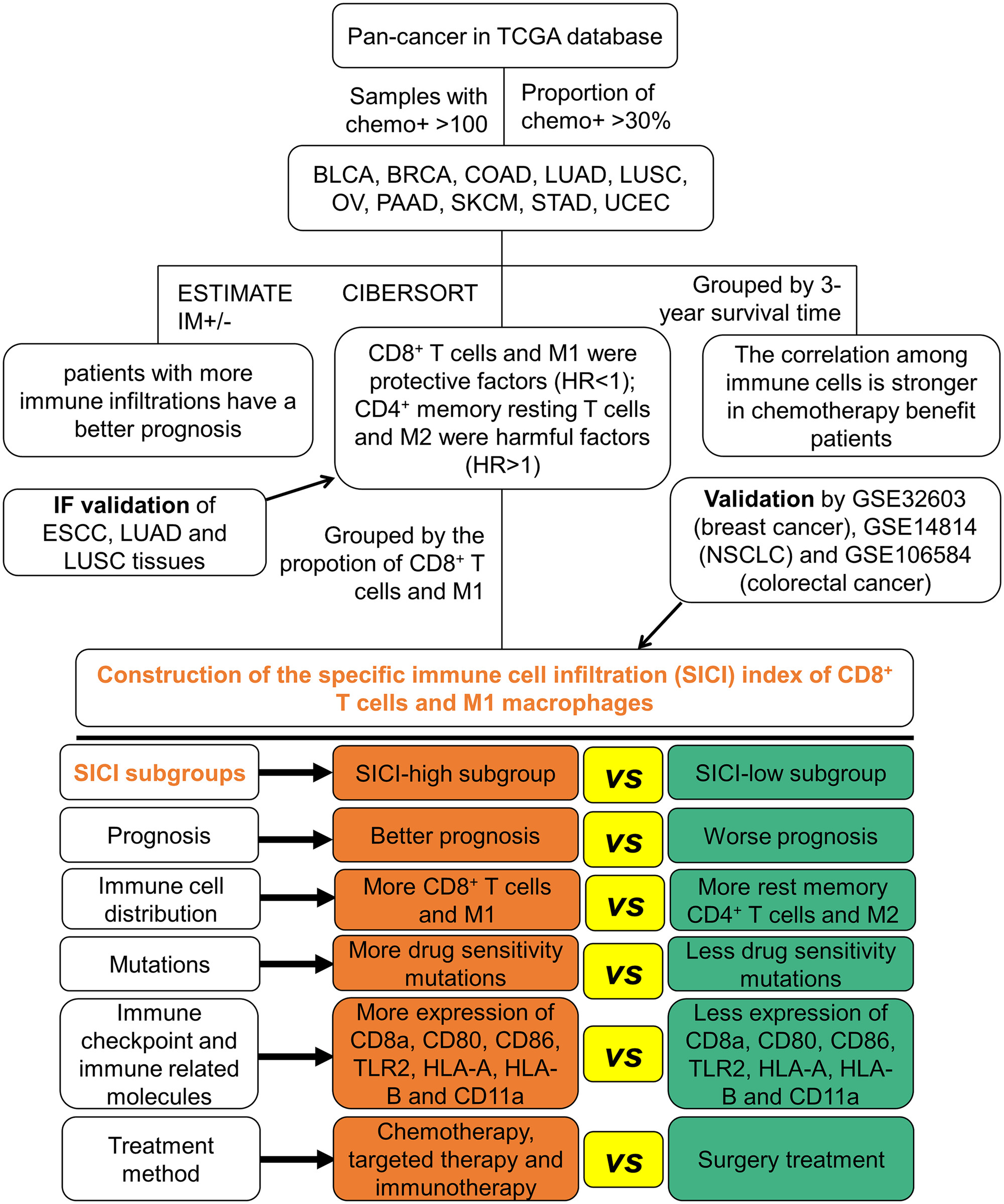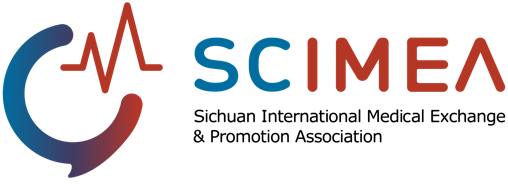MedComm-Oncology | Extensive infiltration of CD8+ T cells and M1 macrophages is beneficial for multiple cancer patients undergoing chemotherapy

Open the phone and scan

Data screening and analysis process. BLCA, bladder urothelial carcinoma; BRCA, breast invasive carcinoma; COAD, colon adenocarcinoma; HR, hazard ratio; LUAD, lung adenocarcinoma; LUSC, lung squamous cell carcinoma; NSCLC, nonsmall cell lung cancer; OV, ovarian cancer; PAAD, pancreatic adenocarcinoma; SKCM, skin cutaneous melanoma; STAD, stomach adenocarcinoma; UCEC, endometrial carcinoma.
Not all patients can benefit from chemotherapy due to the various of tumor type, stage, location, and the different distribution of immune cells in tumor immune microenvironment (TIME). Immune cells are widely involved in every step of cancer progression, including immune escape, metastasis, drug response, and prognosis. In this study, we explored the transcriptome data of 10 solid tumors treated with chemotherapy to identify the role of immune cells. We downloaded the transcriptome and mutation data of 10 cancers from TCGA databases, and used ESTIMATE and CIBERSORT algorithms to assess the proportion of immune cells in the TIME. According to the proportion of specific immune cell infiltration (SICI) of CD8+ T cells and M1 macrophages to group the patients, we found that compared with the SICI low and medium groups, the SICI high group had a larger tumor mutation burden, more gene mutations with targeted drugs, more activation of immune checkpoints (PD-1, PD-L1, CTLA-4, LAG-3, TIM-3, and TIGIT), and immune molecules (CD8a, CD80, CD86, TLR2, HLA-A, HLA-B, and CD11a) (p < 0.05). Therefore, we can select an appropriate treatment for patients by clarifying the proportion of immune infiltration of CD8+ T cells and M1 macrophages in the TIME.
Article Access: https://doi.org/10.1002/mog2.89
More about MedComm-Oncology: https://onlinelibrary.wiley.com/journal/27696448
Looking forward to your contributions.


